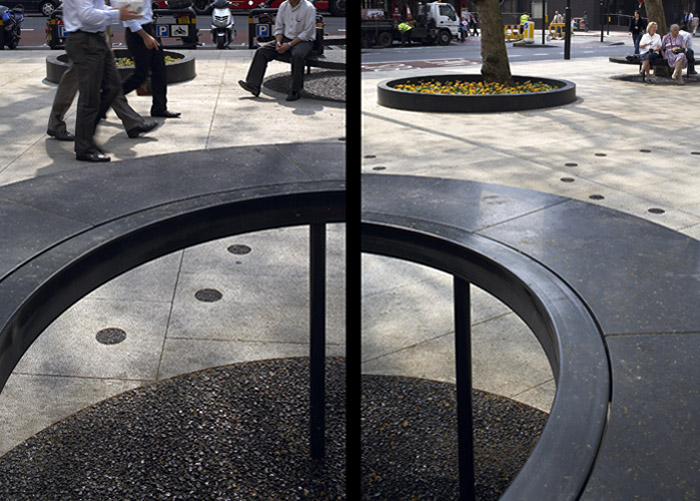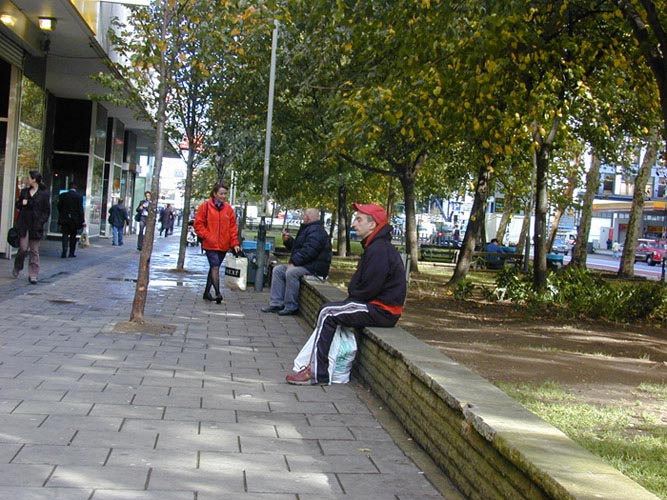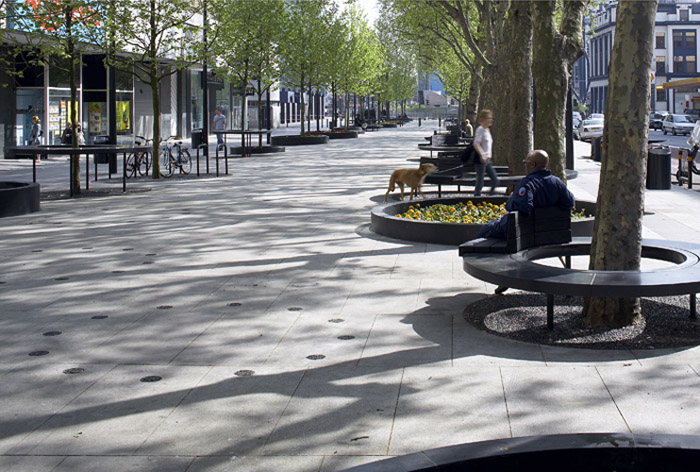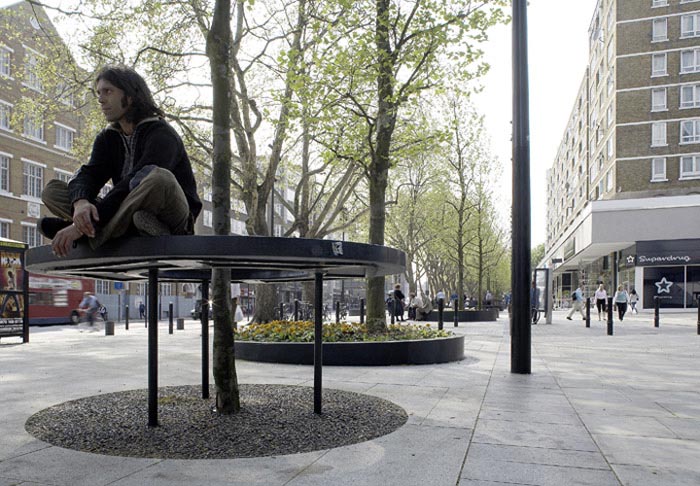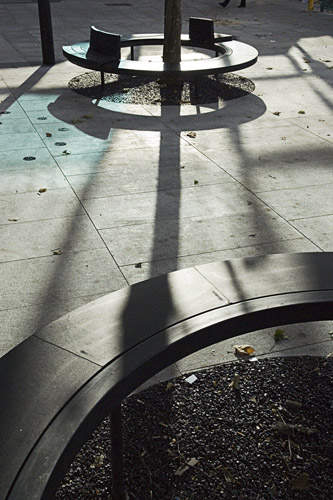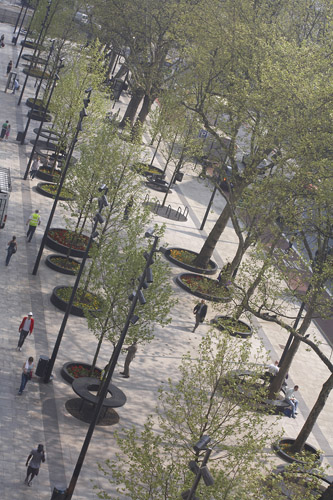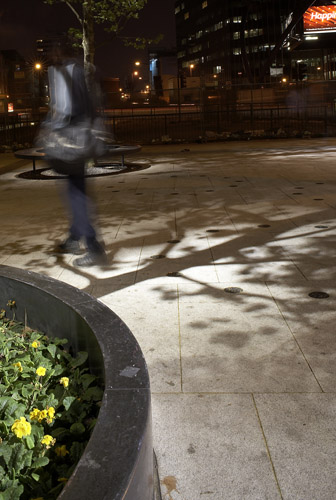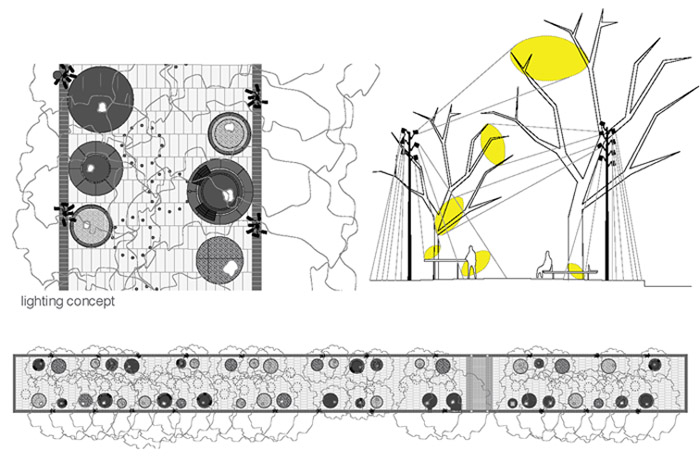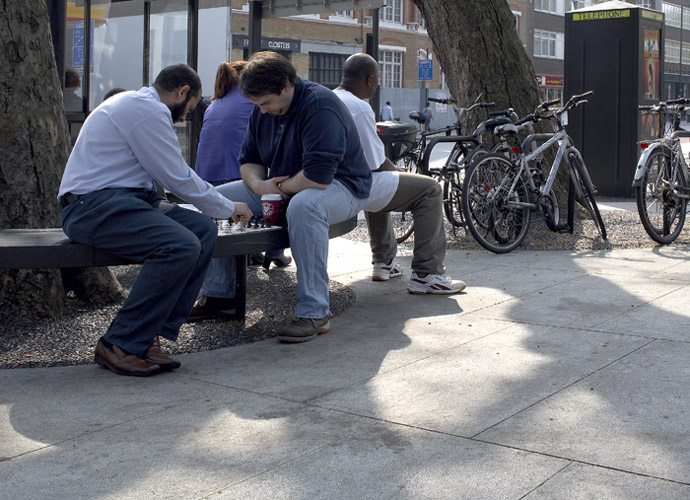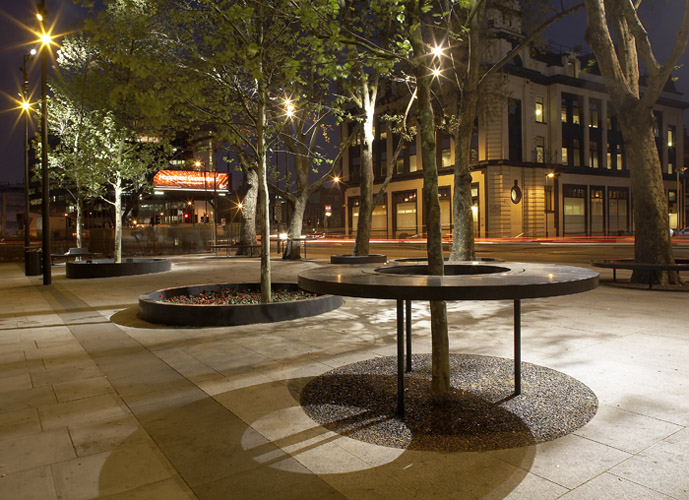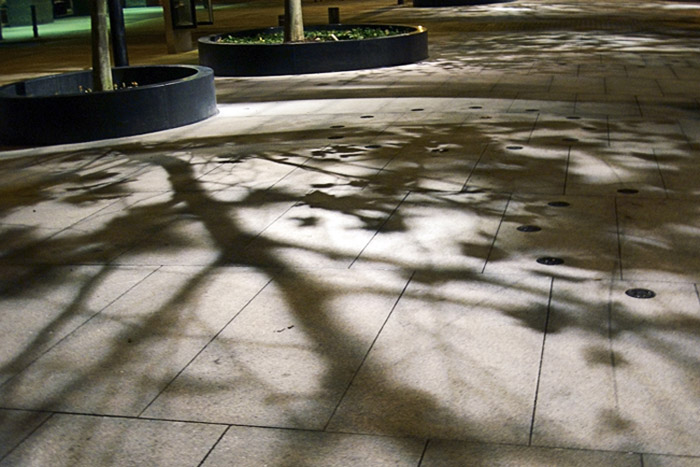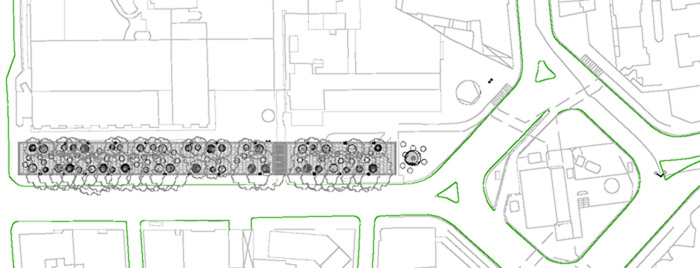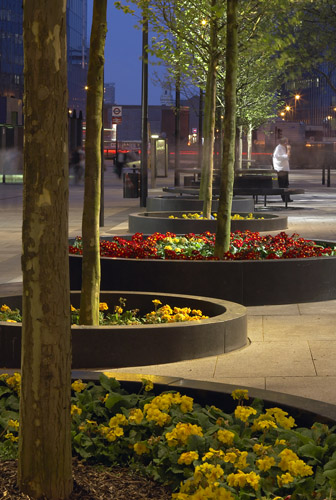Previous state
Located in the centre-city neighbourhood of St Luke’s, Old Street coincides with the border between the Borough of Islington and the City of London. It has a homonymous underground station at the rotunda where it meets City Road. From this point and moving some two hundred metres westwards, the width of the street expands considerably to include a tree-lined walk parallel to the road where the vehicles pass.As a vestibule to the City, this is a very busy, crowded space in which one sees different kinds of passers-by at different times of the day, moving with different rhythms. If in the morning and evening, the most crowded times of day, the movement of people is very intense, at other times of the day it becomes a meeting place for the elderly and a playing space for children. Until recently, the central part of the walkway was occupied by a large lawn-planted parterre which, slightly elevated and delimited by a low wall, dramatically constricted the useful section of the thoroughfare. The lateral pavements were in quite a bad state of neglect and the obsolete lighting did nothing to foster any sensation of security after nightfall.
Aim of the intervention
In 2004, this area was identified, within the EC1 New Deal Public Space Strategy of the same year, as a highly significant point in urgent need of renovation. As part of the initiative “Old Street Year” led by the Islington Council, opinions and requests were collected among users and local residents. This made it possible to draw up the rules of a competition, which was an initiative of The Architecture Foundation with a twofold objective in mind. From the functional point of view, the aim was to respond to the crowdedness of the space making it more accessible and ensuring easier transit. From the qualitative perspective, the aim was to dignify the zone, giving it new meanings that would make it more appealing to the wide range of people who use it.Description
The project removed the former central parterre, replacing it with flat, continuous paving in light-coloured durable stone that easily absorbs the sudden bursts of pedestrian activity. At intervals along the pavement are circular motifs that come together or move apart to mark certain resting or playing points, or clear walking spaces, respectively. Like marquetry work, these circles are drawn by means of a series of cylindrical pieces of dark stone cut to size in a workshop and inlaid in the paving. This system means that they are easily replaceable in case of damage or wear-and-tear because of heavy use.The 21 mature plane trees that lined either side of the pre-existent parterre have now been joined by 18 new trees. The circles in the pavement are recurrently echoed around the base of each trunk, which is circled by a ring-like motif with different functions in different cases. Sometimes it is a circular garden plot level with the pavement. In other cases the trunk is surrounded by a raised flowerbed, a circular bench or a bicycle stand.
At night, the street lighting has an essential role to play in making this section of Old Street safer and more attractive. This is so much the case that it is now known as the “Promenade of Light”. It consists of 23 lamp posts lined along two dark strips that mark the rectangle formerly occupied by the parterre. Each lamp post holds between six and eight spotlights facing in different directions, in colours that range from yellow to white. The spotlights illuminate the branches of the trees, transforming them into giant candelabra that throw diffuse, fragmentary shadows of their foliage on to the central paved area. The installation is regulated by a photosensitive switch that optimises energy-efficiency performance and that is programmed to vary the configuration on workdays and holidays, and for winter and summer.
Assessment
In accordance with a policy of rigorous formal democracy, municipalities are inclined to give a unitary and homogenising treatment to their urban public spaces. This usually means that the differential features characterising a place are conditioned by the architectural idiosyncrasy of the surrounding buildings which, in most cases, are private. Carried out in the public domain, the project of the “Promenade of Light” counters this tendency, transforming a run-down and obsolete space into a specific, recognisable place with meaning.David Bravo Bordas, architect
[Last update: 02/05/2018]


